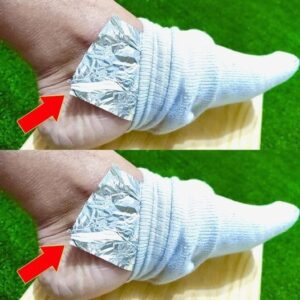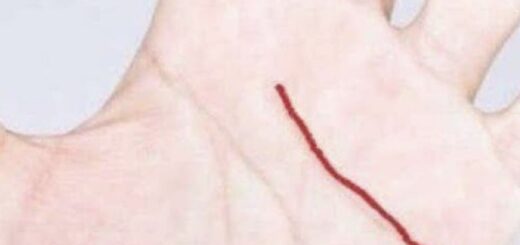Put Aluminum Foil on Your Feet and Say Goodbye to Aches and Pains: The Surprising Hack
Are you familiar with the unusual custom of encircling your feet with aluminum foil? Despite its odd sound, this easy cure has become well-liked due to its unexpected advantages. Many people swear by this strategy to relieve various conditions, but it’s crucial to approach these kinds of hacks with caution. Let’s explore the essential information regarding applying aluminum foil to your feet.
What Are the Benefits of Wrapping Your Feet with Aluminum Foil?
1. Soothes muscular Pain and weariness: According to some, wrapping aluminum foil around your feet will ease muscular soreness and weariness. The theory is that the foil helps relieve fatigue and pain by reflecting the body’s energy back into the muscles. Although there isn’t any scientific proof for this, many users say it works for them.

2. Reduces Joint Pain: By lowering inflammation and enhancing circulation, aluminum foil is claimed to alleviate joint pain, particularly in the foot. Many people with ailments like arthritis have reported seeing momentary alleviation after utilizing this technique, albeit this is primarily anecdotal.
3. Treats Colds and Flu: According to traditional medicine, putting aluminum foil around your feet will help draw toxins out and lessen the intensity of cold and flu symptoms. Some people find solace in this cure as part of their healing process, despite the fact that it may seem unrealistic.
4. Encourages Better Sleep: By lessening the feeling of cold feet, which can occasionally interfere with sleep, wrapping your feet in aluminum foil is also said to encourage better sleep. It’s said that the foil’s reflective quality helps retain heat, keeping your feet toasty warm.
The Best Way to Apply Aluminum Foil to Your Foot
Here’s how to attempt this remedy if you’re interested:
Supplies Required:
Large enough to wrap around your feet, aluminum foil
To fix the foil, use bandages or fabric (optional).
Socks (optional, for comfort and warmth)
Directions:
To prepare the aluminum foil, cut off a length of foil that is big enough to encircle each foot. You can use smaller portions if you’re focusing on a particular area, such as the heels or toes.
Wrap Your Feet: Make sure the shiny side of the aluminum foil is pointing inward when you wrap it around your feet. Additionally, you can wrap it around particular pain or discomfort points.
Fasten the Foil: If necessary, fasten the foil in place with bandages or a gentle cloth. As an alternative, you can cover the foil with socks to prevent it from moving.
Keep It On: Keep the foil on for one to two hours for optimal effects. While some find this useful throughout the day, others prefer to perform it at night before bed.
Remove and Unwind: To improve circulation, take off the aluminum foil after the allotted amount of time and give your feet a light massage. Your feet might feel warmer or more relieved.
Possible Advantages and Things to Think About
Economical: Since aluminum foil is widely available and reasonably priced, practically anyone can use this cure.
Unknown Adverse Effects: As long as you are not allergic to aluminum foil, applying it to your feet is generally regarded as safe.
Anecdotal Evidence: Although many people report advantages from this technique, it’s crucial to keep in mind that the majority of the evidence is anecdotal and that individual efficacy may differ.
Do You Want to Try It?
Although it might not be a substitute for conventional medical care, covering your feet with aluminum foil is a safe, inexpensive solution that may provide short-term respite from some conditions. This trick might be useful if you’re experiencing joint discomfort, cold feet, or muscle tiredness. However, it’s always better to speak with a healthcare provider if you have a significant medical issue or chronic symptoms.
To sum up
One of those odd home cures that many people find fascinating is the custom of putting aluminum foil over your feet. The technique is safe to attempt and may help with mild aches, pains, and exhaustion, even though it may not have solid scientific support. Think about using this odd but maybe helpful tip the next time you’re experiencing foot pain!


